How Long Do Dried Beans Last? (Storage Tips)
This post may contain affiliate links. Read our disclosure policy here.
Do you want to store dried beans long-term but are not sure the best way to store them? Just how long do dried beans last? Let’s learn together today so that you can build your stockpile tomorrow!
How Long Do Dried Beans Last? (+Storage Tips)
Beans should be on our list of best friends when it comes to food. These organic proteins are incredibly beneficial to your health, and there are several methods to consume them. Add savory broth and make stews, or add a few cups of water, tomatoes, and spices and boil up some lentils for a tasty side dish. However you like to serve your beans, you will always want to make sure you have plenty in your pantry!
Because dried beans have a longer shelf life than fresh crops, it makes sense to store up these (typically) low-cost vegetables.
So, how long do dried beans last? Dried beans last up to one year if you store them properly in a cool, dry area. You can store them even longer than one year; however, the longer you store beans, the more their nutritional value will deteriorate, and they will not taste the same.
I also like to Can Dried Beans. But we will stick to talking only about storing dried beans without canning in this blog post.
Keep reading to learn more about the tips and tricks to make your dried beans last even longer than that!
How Long Do Dried Beans Last?
Dried beans can last for an entire year in a cool and dry storage place like the corner, cupboard, or pantry. They can last even longer, as they will not go bad on their own, but they will not taste the same. The nutritional value of the beans doesn’t begin to deteriorate until after 2-3 years.
Long-term food storage is generally a wise option, and beans are an excellent choice for long-term storage. Still, it is necessary to know which beans are the finest.
It might end up being a waste of time and money to preserve any type of bean for an extended period since you want beans that have the most nutritional content and can be utilized in various meals when cooked. That is, unless you are storing them properly.
Each of the beans listed below can be preserved for extended periods while maintaining their nutritious quality:
| Bean Type | Lifespan | Storage | Nutrition facts |
| Red Mung Beans | 1-2 years | Cool/Dry | 294 calories 17 grams of protein 16 grams of fiber _______________ |
| Kidney Beans | 2-3 years | Room temperature | 225 calories/1 cup serving 15 grams of protein 13 grams of fiber ________________ |
| Pinto Beans | 2-3 years | Room temperature | 240 calories 15 grams of protein 15 grams of fiber ________________ |
| Split Peas | 2 years | Cool/Dry | 231 calories 16 grams of protein 16 grams of fiber ________________ |
| Cranberry Beans | 1 year | Cool/Dry | 241 calories 16.5 grams of protein 17 grams of fiber ________________ |
| Soy Beans | 6 months | Cool/Dry | 298 calories 29 grams of protein 10 grams of fiber ________________ |
How to Store Dried Beans to Last Longer
As mentioned before, dried beans can last a year in most cases with typical storage. However, there are some ways that can make your beans last even longer than that.
So, here are a few suggestions on how to effectively store your dry beans so that they will last longer:
How to Store Dried Beans in the Pantry
When storing dried beans, choose a dark and dry location because even a trace of moisture might degrade their quality.
It’s highly recommended not to keep the beans in the plastic bags you purchased them in as these bags tend to be flimsy, allowing moisture and insects to get in and damage the beans. Instead, it’s best to move the beans to airtight containers, then store them in your pantry.
If you have only purchased enough dried beans to last a few months, they can be stored in any air-tight container on the pantry shelf. Otherwise you might want to consider some of the alternatives below.
Recommended Containers for Better Beans:
#10 Can
The #10 cans are made of tin-coated steel, non-toxic and non-corrosive, and will last for many years. They will also not allow any light or oxygen in, ensuring that the beans are adequately preserved as long as they are kept at cool temperatures.
You can usually find #10 cans with beans at LDS supply stores. You might also be able to find them at restaurant supply stores if you have one open to the public nearby.
Mylar Bags
You can buy mylar bags in a range of sizes, so choose one that fits the number of beans you want to keep. I like these 2 quart Mylar Bags. All you need to do is fill the bags with beans, then seal them using a heat source, such as iron.
You will want to place an oxygen absorber in the mylar bag before sealing. I use the 500cc size in the 2-quart bags.
I have a full tutorial on using mylar bags and sealing them for long-term storage here.
Mason Jars
Mason jars are another common option for long-term storage. You can use a vacuum-sealed cover to prevent oxygen from getting into the jar and spoiling the beans.
I have a Vaccum Sealer attachment for jars that I use with my Foodsaver Vacuum Sealer. I also use these silica packets in the jars when I am vacuum sealing.
5 Gallon Buckets with Gamma Lids
While not as long term as the store options above, storing your dried beans in a 5 gallon bucket with a Gamma lid is still a good choice. The Gamma Lid provides air-tight containers and seals so that no moisture or bugs can get in to your beans.
I personally keep all of my dried beans in buckets with gamma lids and we use the beans up within the year so that we can rotate them out.
Can You Store Dried Beans in the Freezer?
Dry beans can be stored in the freezer to protect them from anything that might damage them. When storing dried beans in the freezer, make sure to keep them well sealed freezer bags to prevent moisture from entering.
Do Dried Beans Go Bad?
Beans, like any other food, will eventually go bad. They are susceptible to environmental factors that cause nutrients to break down, leading them to become spoiled or moldy. More often than that, dried beans will get hard and will be very difficult to soften when cooked if they are allowed to get too old.
Even if the beans are safe to consume, they will still lose some nutrients, like vitamins over time. However, nutrients like protein and minerals will remain the same.
How to Tell That Your Dried Beans Are Bad
Detecting whether your beans have gone bad is pretty straightforward. Here are some signs you should look for:
- Holes! Inspect the beans for holes, which indicate the presence of insect eggs. If you have holes, you have an infestation.
- Pantry bugs appearance: If weevils have settled in your container or bag you’ll need to toss all of your dried beans.
- Rancid smell: Dry beans normally have no discernible odor. If you open your bag of beans and notice a rancid odor, this might be an indication of mold, fermentation, or bug droppings.
- Signs of mold: You may notice fuzz coating over the surface of the beans. This can happen when the dried beans are exposed to moisture.
- Change in flavor: If everything appears in order up to this point, it’s time for a tasting test ensure you’re not storing bad beans. If it has a weird taste of any kind, it’s time to say goodbye.
- Change in texture: If you cook your dried beans and they still seem hard or firm no matter how long you’ve cooked them, they are no longer good.
Change in color: Beans are often brownish or tan in color. Throw them out if they have mottled skin, black spots, or visible mold leftovers. Although discolored beans are frequently acceptable to consume, their nutritional value will most likely be reduced.
What Happens If You Eat Spoiled Dried Beans?
Dried beans do not really expire, so they will not harm your health when stored properly, even if you have stored them for years. However, storing them properly is the key here.
You also need to make sure that all dried beans are cooked correctly. Consuming raw beans can make you sick as they contain Glycoprotein lectin, which can cause some nausea and diarrhea.
Some people have sensitive stomachs and cannot correctly digest dry beans. They will be prone to indigestion after eating beans. This doesn’t mean there was anything wrong with the beans. It just means that it’s a food that not everyone can handle. If you soak the beans before cooking, it may eliminate some of the discomfort of eating them.
What Should I Do With Bad Uncooked Dried Beans?
If the beans have a sign of a bug infestation or are moldy, toss them.
If the beans are very old and discolored, you can add them to your compost pile. You can also use them for kid’s crafts and projects like the one above.
Where Can I Buy Bulk Dried Beans?
Azure Standard is a good source for bulk dried beans if you are looking for organic.
If you are in South Dakota or Wyoming, ask Black Hills Bulk Foods and they can get any kind you need.
Great Ways to Prepare Dried Beans
After all, we store dried beans to use them in a delicious meal later, don’t we? When you decide it’s time to sprinkle some beans in your next dish, here are some simple ways to prepare them.
- Money Saving Meals With Dried Beans
- Cooking Dried Beans; How to Soak and the Best Ways to Cook Them
- Old Fashioned Baked Beans Recipe
- Frugal Dried Bean Soup Mix
- Making and Using Bean Flour (Plus Recipes Using Bean Flour)
- Homemade Beef and Bean Burritos for the Freezer
- Bean with Bacon Soup Recipe
- Easy Refried Black Beans
- Fresh and Easy Avocado Corn Salsa Recipe
Found this post helpful? Be sure to share with your friends on Facebook, Twitter, Instagram, Pinterest, and through Email using the sharing buttons below!

This post on How Long Do Dried Beans Last was originally posted on Little House Living in February 2023.


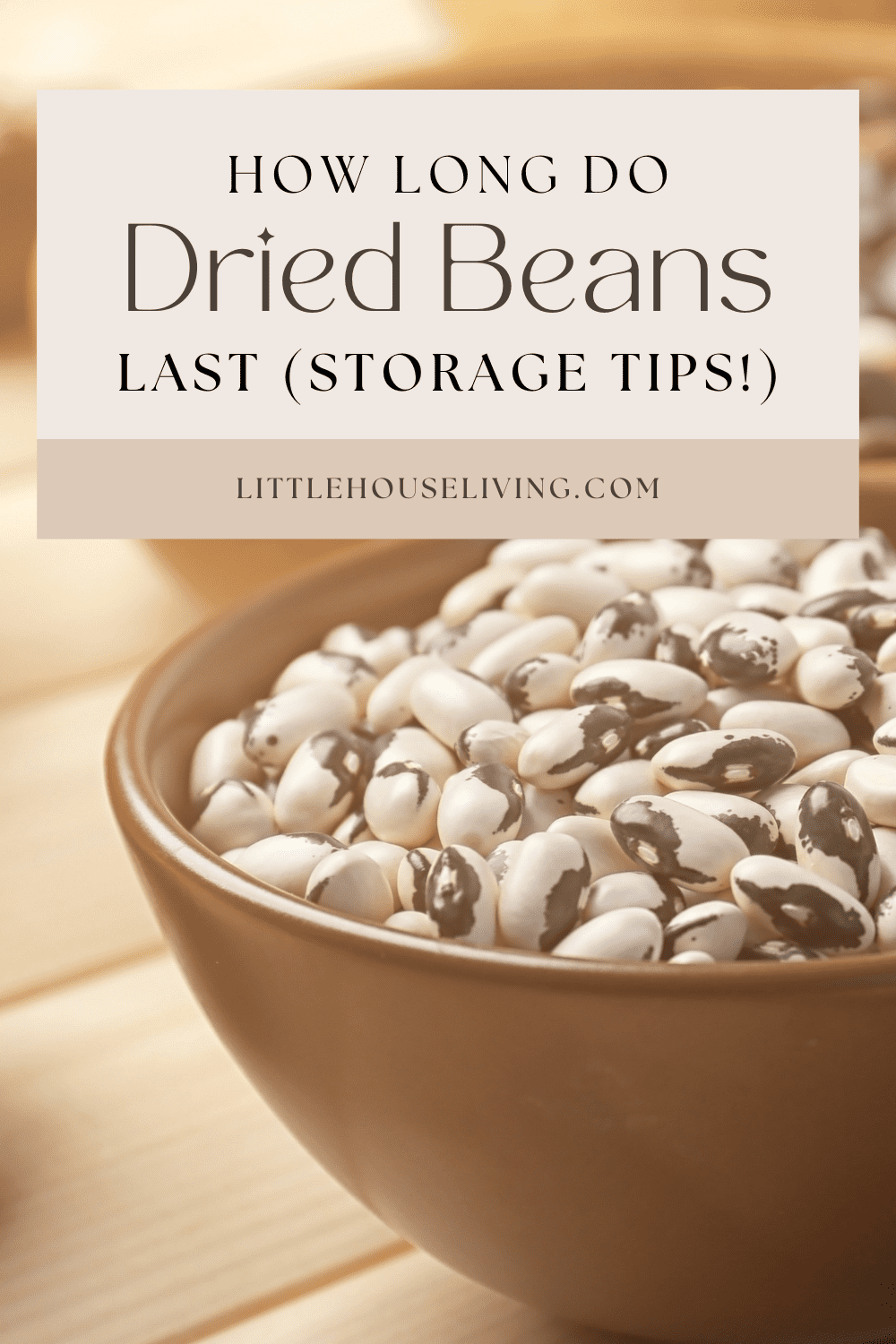
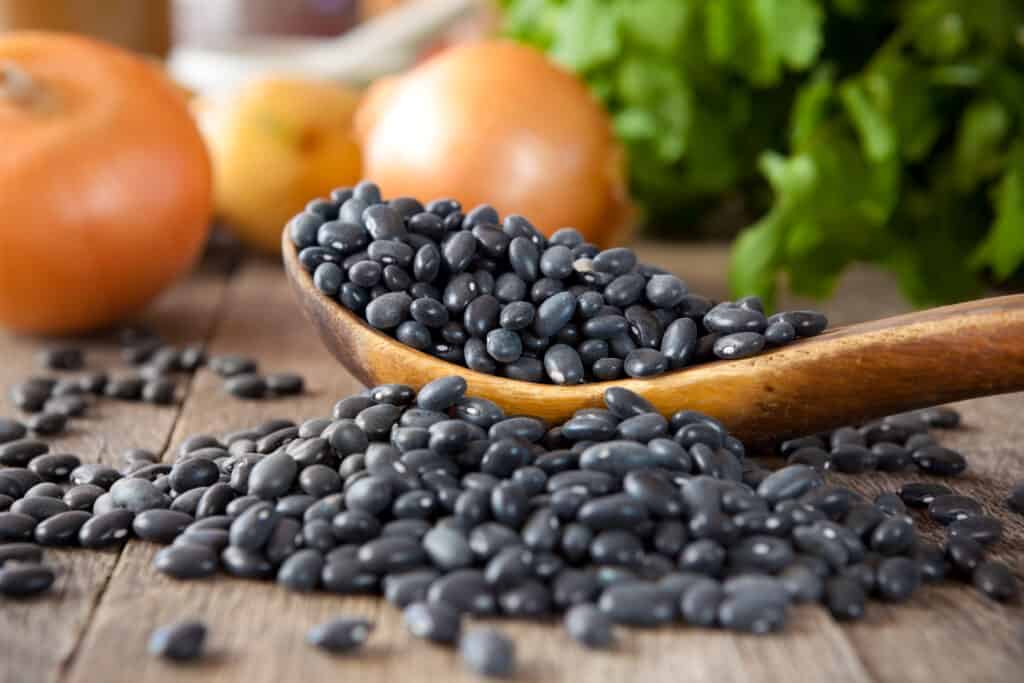
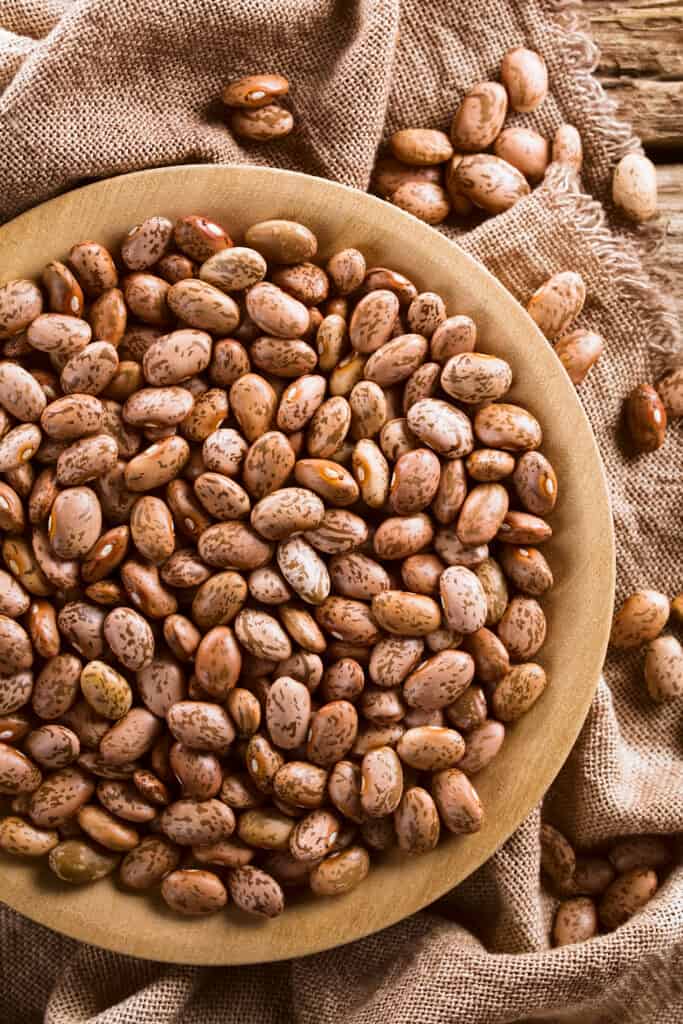
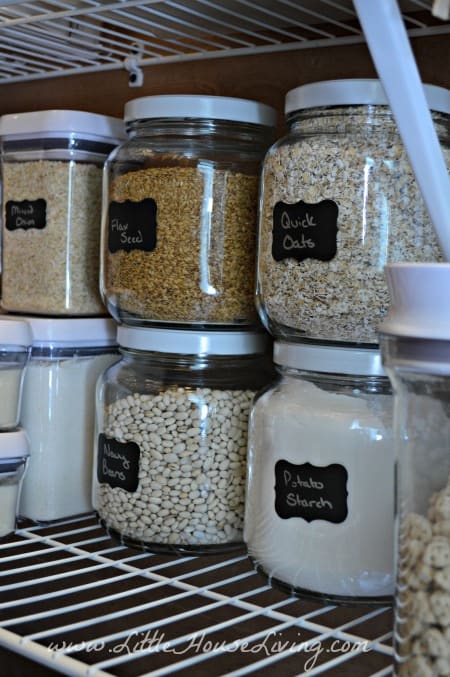
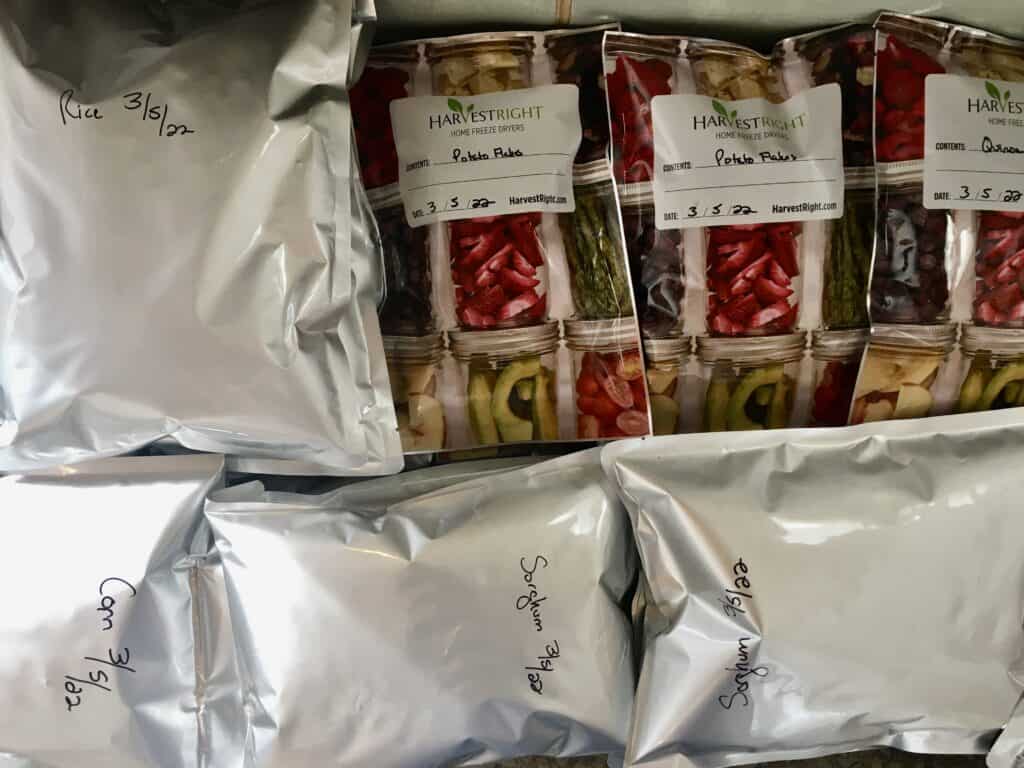
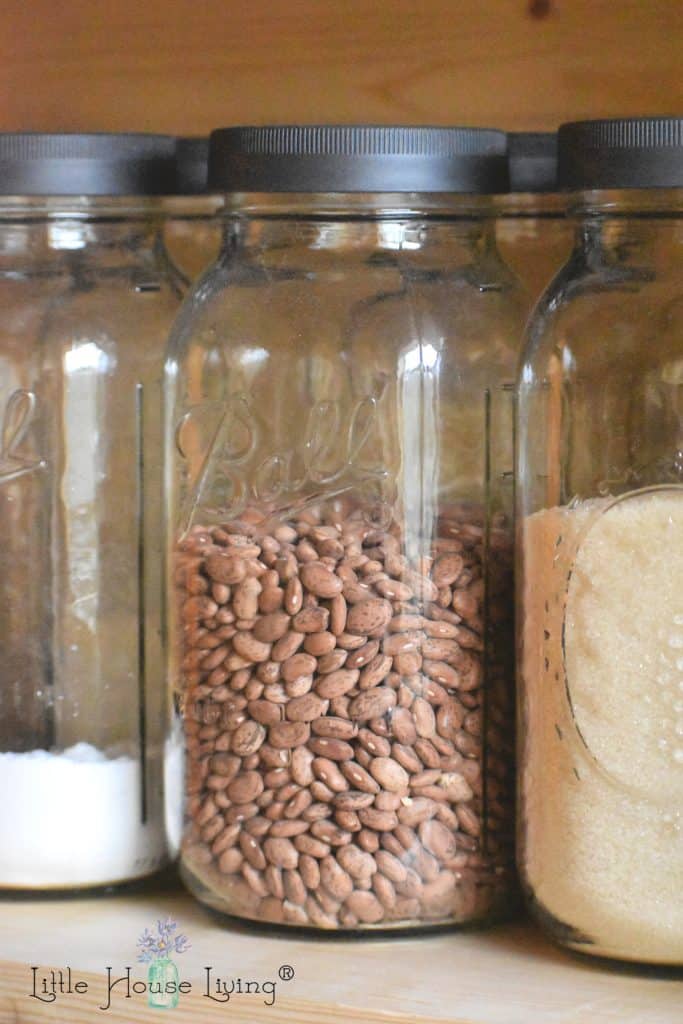
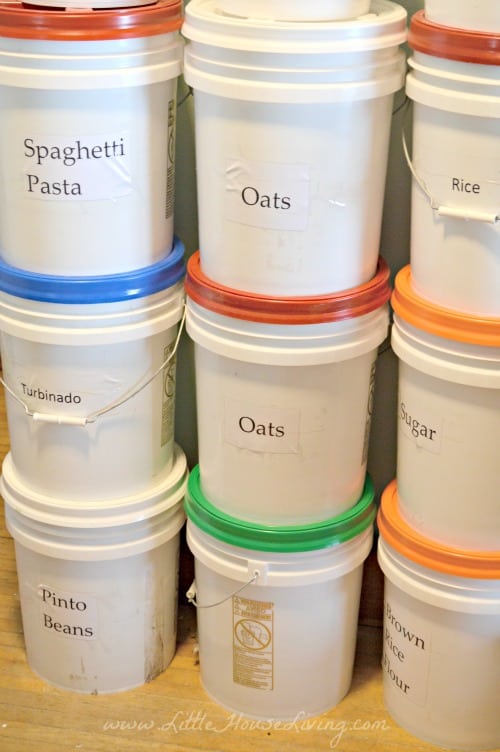
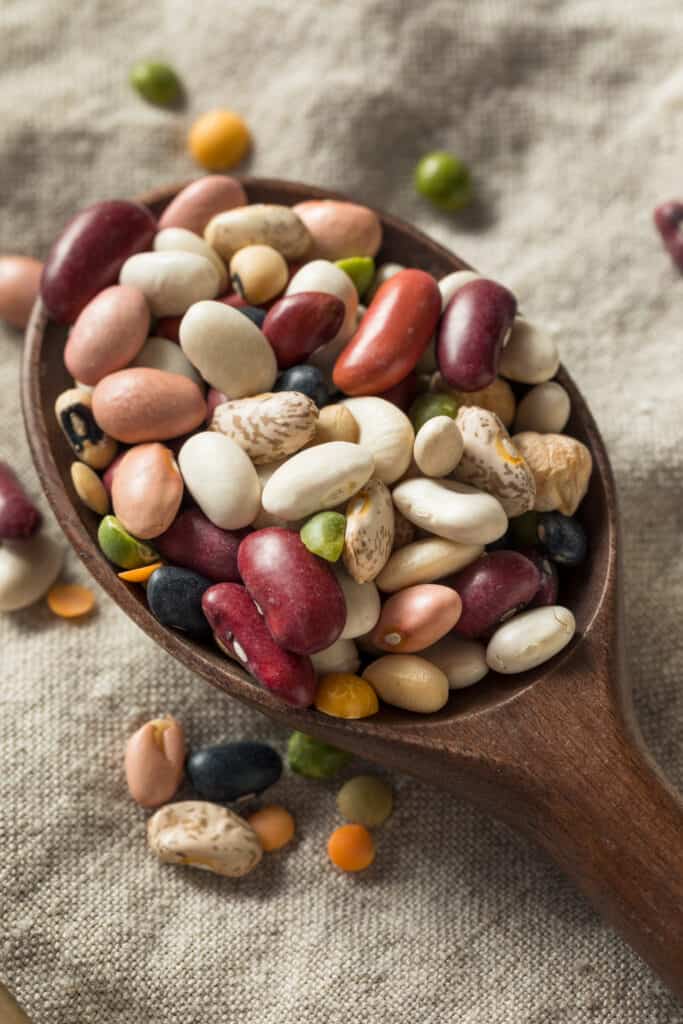
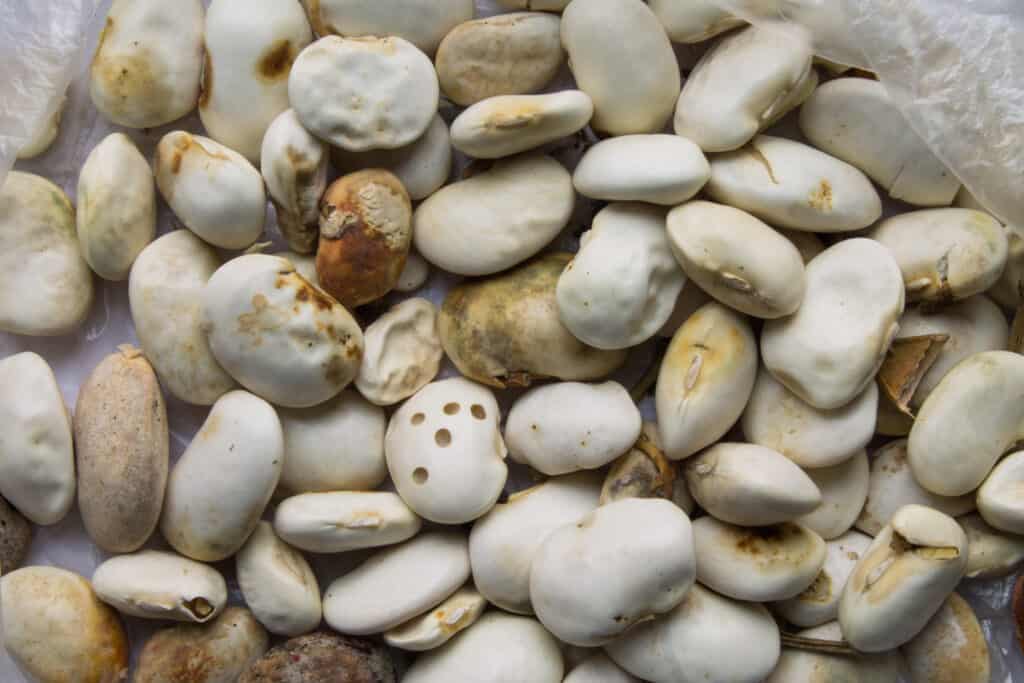
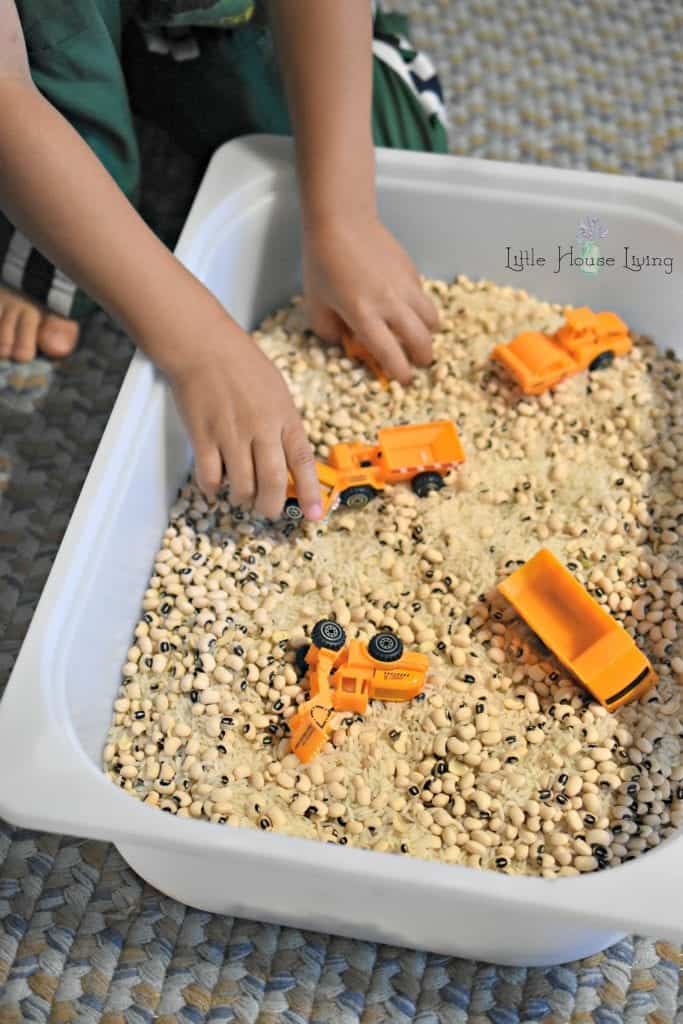
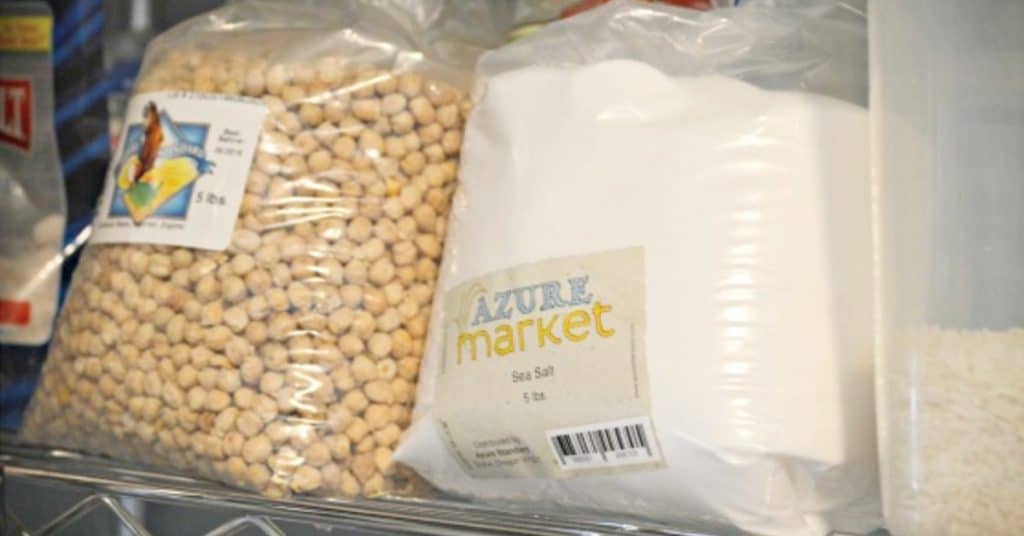
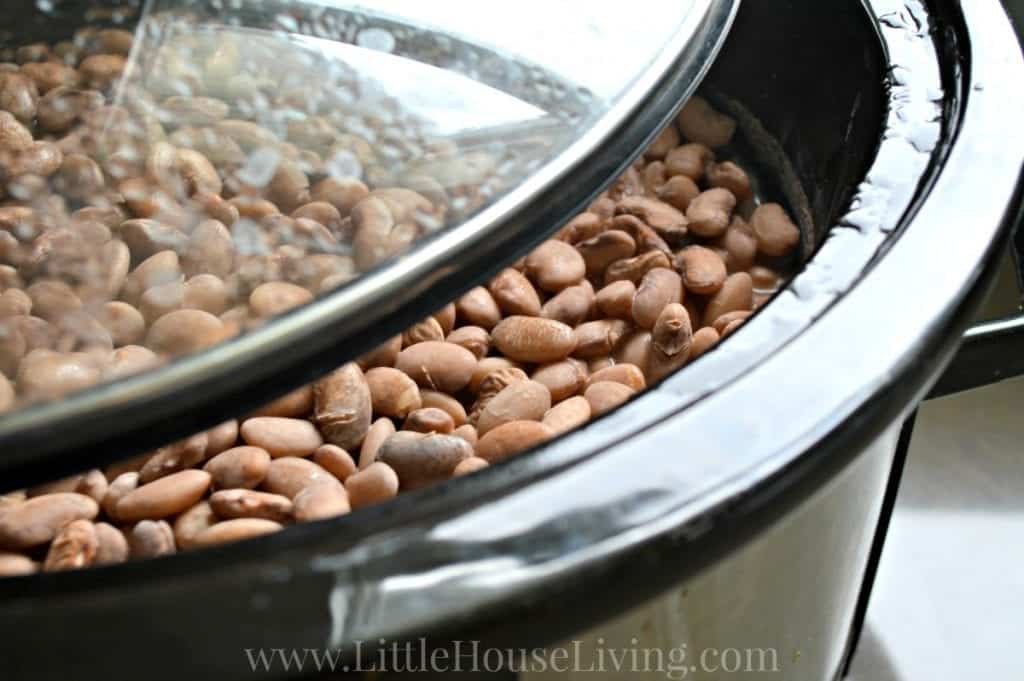

Love these tips!! I actually had 4-6 pounds each of several different kinds of beans (red, black, Great Northern, and pinto), and spent about a week, soaking over night, rinsing well, packing into quart and pint jars, and pressure canning… batch, after batch… HOWEVER, what that took in time SPENT is time SAVED when putting together a quick meal – steam some rice, pop the lid, add a few tortillas and a blender salsa, and dinner is on the table!!! SO GREAT for quick nights (and my cravings for my favorite Popeye’s red beans and rice!).
Another thing to do with beans – you show the kids playing with a bean box? My Autistic daughter had sensory processing issues. I put together a sweater box with 5-6 different kinds of beans, all slightly different shapes and sizes. We kept it in the special ed room at her school, and she had it from elementary school through high school. There was a snap-on lid, and none of the mess of a sensory sand or water table! Her teachers were exceedingly grateful, and my daughter had a quick way to ease an impending meltdown, just by running her hands through the beans when she was overwhelmed… Inexpensive, no mess, lasted for years. Thanks for the great posts – my big frustration (not with you, by our impoverished selves!!!) is not having some of the equipment: a vacuum sealer would be great, as would an Aerogarden. Even setting up basic hydroponics requires time, money, nutrients for the water, a light, etc., etc. We’re still scavenging windows to try to get our greenhouse built this summer: the Wisconsin winters do NOT lend themselves well even to “winter harvests” on the years when the freeze comes quickly, but having a greenhouse should make those harvests a bit more productive!! 🙂 Many blessings!!! ~Chrissie